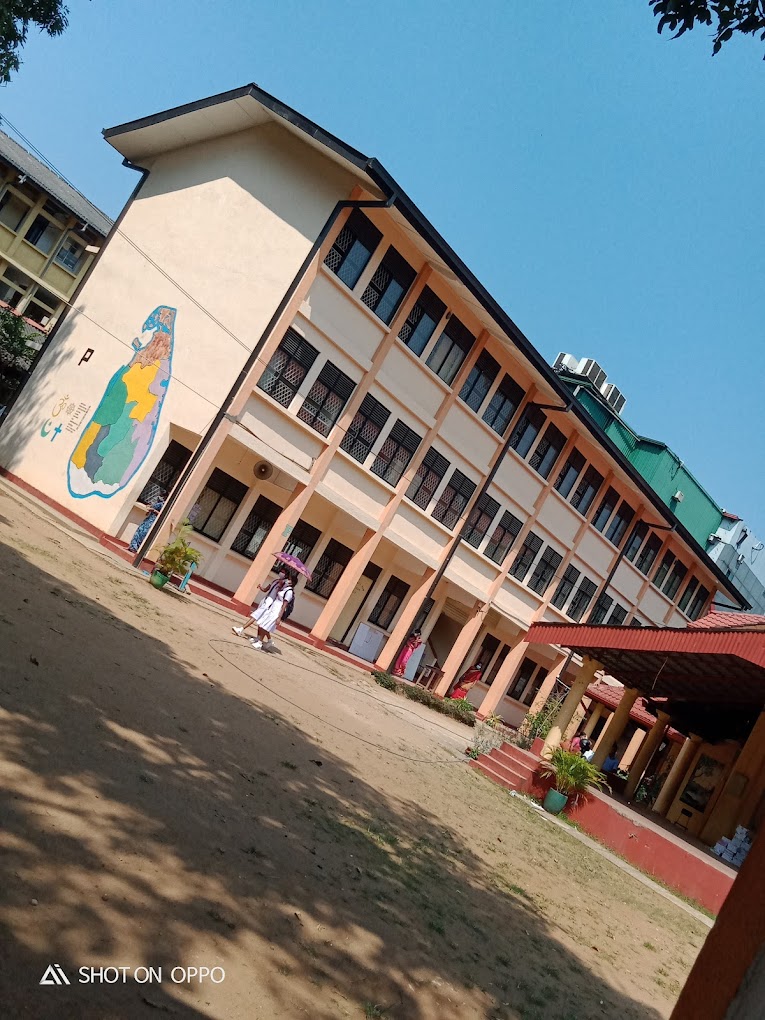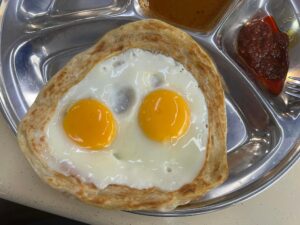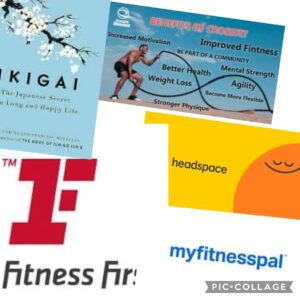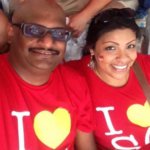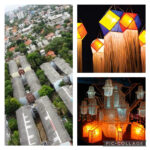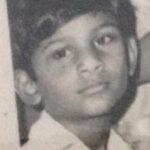In just 12 days, my 12-year-old will be sitting for the Primary School Leaving Exam (PSLE), a crucial milestone for kids in Singapore. This exam determines the school they’ll attend, the subjects they’ll study, and their academic band.
– – – –
This got me thinking about my own first 12 years of education.
Up until the age of 6, I don’t believe I had any formal education, either at home or in a school. We were living in Watawala at the time. I think my parents began to realize that their third child needed some education, so they hired Sudamani Master, who came to our house every Saturday. That’s when I started learning how to write numbers. I remember writing 1-10 on a big foolscap paper that my father had brought from the hospital and showing it to Amma. On the days Sudamani Master visited, Amma would make crab curry. To this day, I’m not sure if Sudamani Master’s interest was in teaching me or in Amma’s crab curry. I used to tell Amma that I was too shy to ask for help in front of Sudamani Master, so without me asking, she would help me crack the crabs.
The following year, we left Watawala as Appa got transferred to Gomarankadawala hospital. There was only one school in Gomarankadawala, “Gomarankadawala Sinhala Mahavidyalaya.” Yes, my formal schooling began at Gomarankadawala Sinhala Mahavidyakaya in Sinhalese medium. While I could speak fluent Sinhalese, I did not know how to read or write it. The only subject I could follow was math, thanks to Sudamani Master. As the only doctor’s son in the village, all the students treated me well. Every Friday, the school distributed Thriposha, which actually came from the hospital. This meant our house was always full of Thriposha, and Amma would make Thriposha balls for tea every day. I asked Amma, “We have so much Thriposha at home, do I really need to bring one packet from school every week?” Amma said I should just do what the other kids were doing and not try to be special. The quarters were just across the street from the school, so during the interval, I would run home, and Amma would have lime juice ready. I can’t forget Thriposha; during the 1977 riots, when we heard that our house might be attacked, one night we were hiding behind the Thriposha bags in the hospital.
After Appa passed away in October 1977, we moved to Matale. I was enrolled at Hindu Mahavidyalayam. Directly from Sinhala Mahavidyalayam to Hindu Mahavidyalayam. Due to the change of place, the loss of Appa, and for various other reasons, I refused to go to school. At the age of 8, every day I would wake up and cry, saying I didn’t want to go to school. This went on for months. Then, as I started to settle in, it was time for the next move. At this point, I had not completed grades 1 or 2. Before we moved to the next location, using the influence of one of my second cousins, Viji Anna, I managed to obtain a school leaving certificate, stating that I had passed second grade.
Our next stop was Uralu. With that fake school leaving certificate, I was enrolled at Ganesa Vidyasalai in grade three. I didn’t know how to read Tamil, didn’t know how to do math, and was asked to sit in the last row to signify that I was one of the worst student in the class. The walk from our house to Ganesa Vidyasalai was quite long. It was a small lane passing by the shop where I bought daily bread and milk. The sand in Uralu was almost red in color, so when you looked at the land, it looked like a red carpet. On the way to school, I used to get bullied by three boys who lived very close to our house. I didn’t tell anyone; I was scared passing by their house as they would try to hit me, pull my bag, and remove my hat. This continued for a while, and then suddenly I stopped seeing them. Later, I heard that their father had passed away in a motorcycle accident, and the family had moved. I was relieved. I worked hard at home and started getting better marks, slowly moving to the front rows. However, that didn’t last too long. Due to a situation at the house we were living in, we were forced to leave with very short notice. We left the house and moved to another Aunt’s house in Neeraviyadi, disrupting my schooling for another few months.
Then, Amma decided that we would go back to Matale. In the next few months back in Matale, I was once again enrolled at Hindu Mahavidyalayam. This time around, I was very settled in the school from the very first day. Another long walk to school; we pretty much walked the entire King’s Street, passing the bus interchange, convent, St. Thomas, and Matale junction. Hindu Mahavidyalayam seemed like the perfect place for me for long-term studies, after all the early disruptions. Then came the next twist; the local government decided to make changes to Tamil schools in Matale. All the boys above sixth grade were asked to move to Mandandawela Tamil Mahavidyalayam, and those below sixth grade were merged with Pakyavidyslayam, a girls’ school. Overnight, from an all-boys’ school, we became a co-ed school. We didn’t complain, but what we didn’t like was when someone asked, and we had to tell them we were studying at Pakyavidyalayam, which was a girls’ school. In 1981, during grade 5, it was the scholarship year. Amma was saying that if I passed the exam, she wanted me to go to Colombo and study. Everyone was going for extra classes, but financially, we couldn’t afford to pay for extra classes. Luckily, one of our family friends, Ramachandran uncle, who was a famous grade 5 scholarship teacher, asked me to join his class for free. I went to his class weekly at Zahira College. Amma was really hoping I would pass, but at the same time, Anna was saying, as a backup plan, he was going to apply for the Royal College entrance exam for me to attend. The scholarship exam came, and I think I did pretty well in math and general knowledge. But when I came home, I realized I had made a big mistake in the Tamil essay. The question was about my 10th birthday party and the gifts I received. The expectation was to describe the gift and write a story about what I did with that gift. Instead, I wrote about the birthday party. The end result was that I failed the exam. Anna executed the backup plan. He came from Colombo and took me to attend the Royal College entrance exam for sixth grade. On the day of the exam, he took me to the school and gave me a lot of instructions. The school was huge with many entrances, and I’m sure hundreds were taking this test. Finally, I found the table and sat down. Throughout the entire duration, I was more concerned about whether I would be able to find Anna after the test. I finished the paper and came out, and to my luck, Anna was standing right next to the door next to my class. I was relieved. In the next few weeks, the results came, and I did not make it.
Anna started executing plan C, which was enrolling me at the school he studied at, Bambalapitiya Hindu College. I was very upset to leave Amma and go and stay at Periyappa’s house. Till date, I don’t know how I agreed to the arrangement to leave Amma at the age of 11. We packed a blue suitcase; all my things were in that suitcase. In January 1982, at the age of 11, I arrived in Colombo with just one blue suitcase. Compared to all the other schools I had attended, Hindu College was a big school, with 4 classes per grade, and I was in 6D. It was a lot of adjustment at home and at school. I missed Amma and everyone in Matale, and I was looking forward to going back to Matale during the April school holidays. By now, Amma and I had started writing regular letters to each other. I wish I still had them. I stayed at Anderson Flats, which was a long way via Park Road to Hindu College. Periyamma made arrangements with another boy living in the same block to take me to school every day. My mind was all about the April holidays. Then, I received Amma’s letter saying she couldn’t arrange for someone to come and take me back to Matale. I was devastated. Now I had to wait until mid-year school holidays to go and see Amma, which was four months away. Amma’s argument via letters was that the April holidays were only 3 weeks, so it wasn’t worth making the trip, and she couldn’t find anyone to help. Just days after the April school holidays started, on April 8th, 1982, we heard that Matale Mama had passed away. I was very close to him. On one side, I was upset that he passed away, but inside me, I was happy because now I got to go back to Matale.
I was getting settled at Hindu College, getting used to school, receiving regular letters from Amma, and traveling back to Matale every school holidays. Things were slowly getting settled on my educational journey. Then came the 1983 riots, and Hindu College became a refugee camp. The school was closed, and I went to Jaffna for a few months. There were discussions that I should continue my studies in Jaffna. After a few months with no studies, the aunt I was staying with found someone going back to Colombo and asked me to join them and return to Colombo. I was extremely happy to hear that.
Hindu College was still a refugee camp, and the students from Hindu College were moved to St. Mary’s School in Kollupitiya. On the first day, Anna showed me how to get from Anderson Flats to St. Mary’s School. We needed to take bus number 198 to Galle Road and then another bus going towards Fort. When I walked into St. Mary’s School, I was in shock. Hindu College, which had about 160+ students per grade, now had the entire grade 7 squashed into one class, and also the girls from Ramanarhan Hindu Ladies’ School were combined into the same class. Despite all this, there were less than 25 students. A visual representation of what 1983 did to us.
I need to stop here because I need to help my son with his PSLE math question in preparation for the exam.
Jess needs 200 pieces of ribbon, each with a length of 110cm, to decorate a room for a party. Ribbons are sold in rolls of 25m each.
What is the least number of rolls of ribbon that Jess needs to buy?

